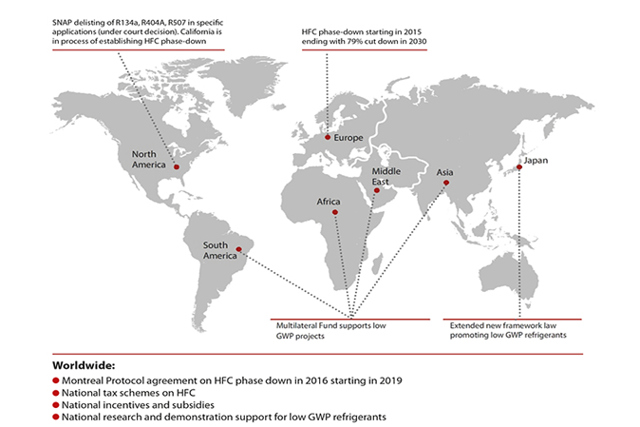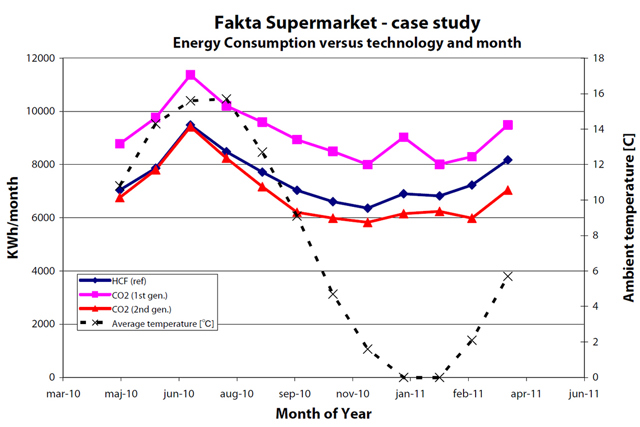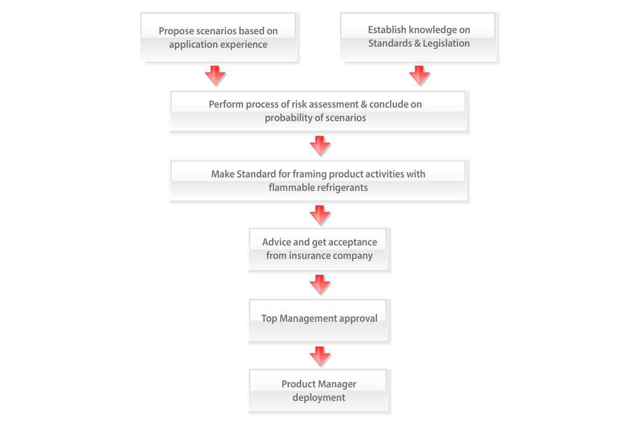How to use the model
It is necessary to quantify the forces to obtain a balance and to detect the timewise development. Often it is of big complexity to calculate specific values and many of the factors are difficult to predict and may even not yield with the same metrics. Thus it is much more effective to use a qualitative approach like to use the model in a workshop with company experts and to quantity the forces in a simple way (like assigning numbers from 1 to 3 etc.). Such approach can deliver more trend based inputs and most importantly facilitate a structured discussion.
Refrigeration, and, in hot climates, air conditioning are vital for mankind to maintain and develop society. Food security and safety are basic strong values that have fuelled the historical developments of refrigeration. Productivity and comfort are benefits from developments within air conditioning. Consequently, technologies have developed during the last century to satisfy these needs. At that time, the risk versus benefit was acceptable – however – accidents caused by leakages of flammable or toxic refrigerants led to development of "safe" refrigerants. The introduction of the CFCs and later on HCFCs did solve safety problems, but environmental risks were not considered until the 1970s. The severe consequences of a continued use of CFCs then became obvious leading to a global agreement to phase out CFCs. The solution to the ODS problem was found through the development of HFCs, which did not compromise safety. However as we know today, HFCs would become a main global warming source unless new technologies could be developed and applied.
The question is now what will drive development of these new technologies and importantly at what speed. The ideal scenario is a global regime to set the frames for national legislation that would provide industry a well defined and level playing field, and the motivation to invest and develop products. The Montreal Protocol has been a good example of how a global regime can motivate technology shifts effectively. The Kyoto protocol was not effective because of lack of global commitment and a much more complicated scope, which only indirectly addressed HFCs. Finally a HFC phase down was amended to the Montreal Protocol in 2016.
Industry today has to develop products for many refrigerant solutions within each application. It is in each case up to the manufacturers to decide if products should be developed, and if yes, to what type of product should be developed. The availability of approved components for new applications using low GWP refrigerants is a necessity. As a manufacturer of components, Danfoss has within recent decades been faced with the challenges of developing and introducing components for new refrigerants. The scenario is always complex as it implies technical challenges, safety issues which must be managed in a controlled way, and the challenge of choosing the priorities and time schedules in a complex and uncertain regulatory arena.





